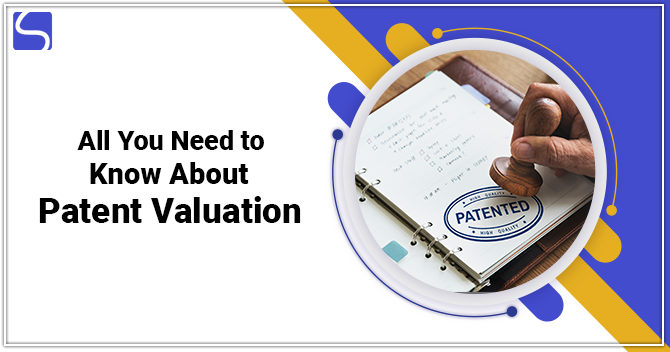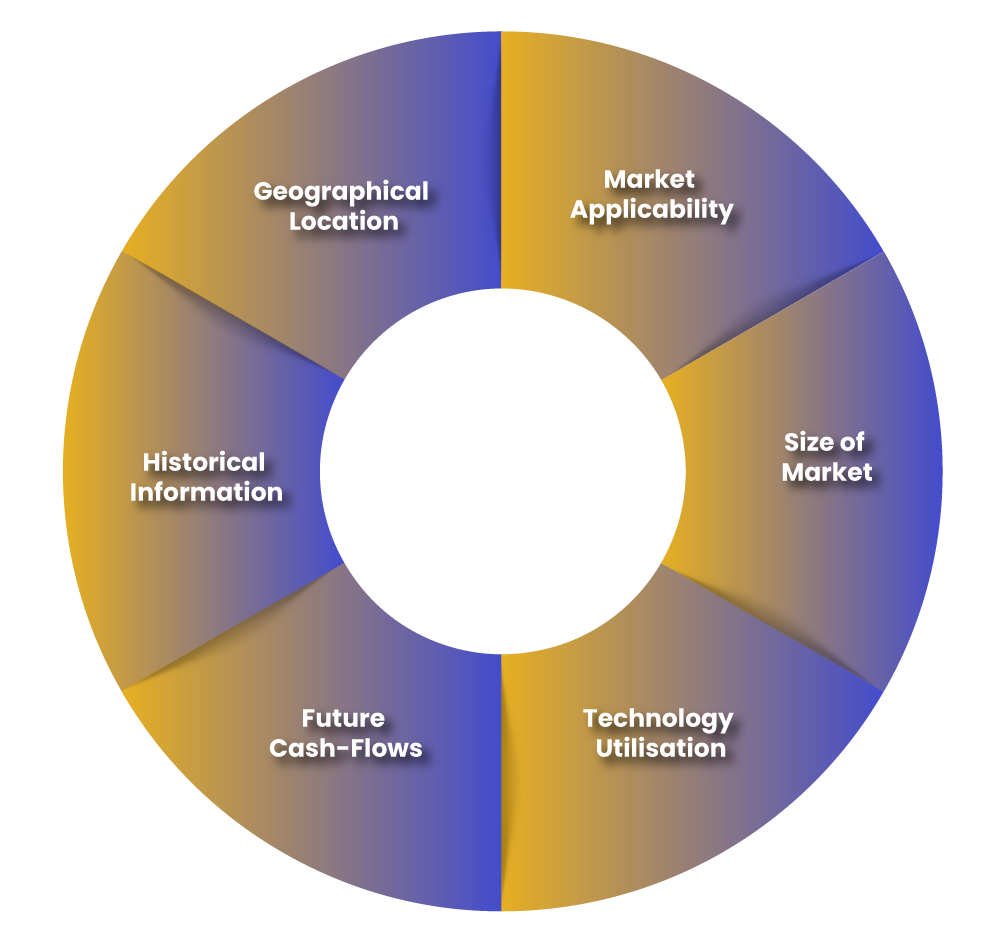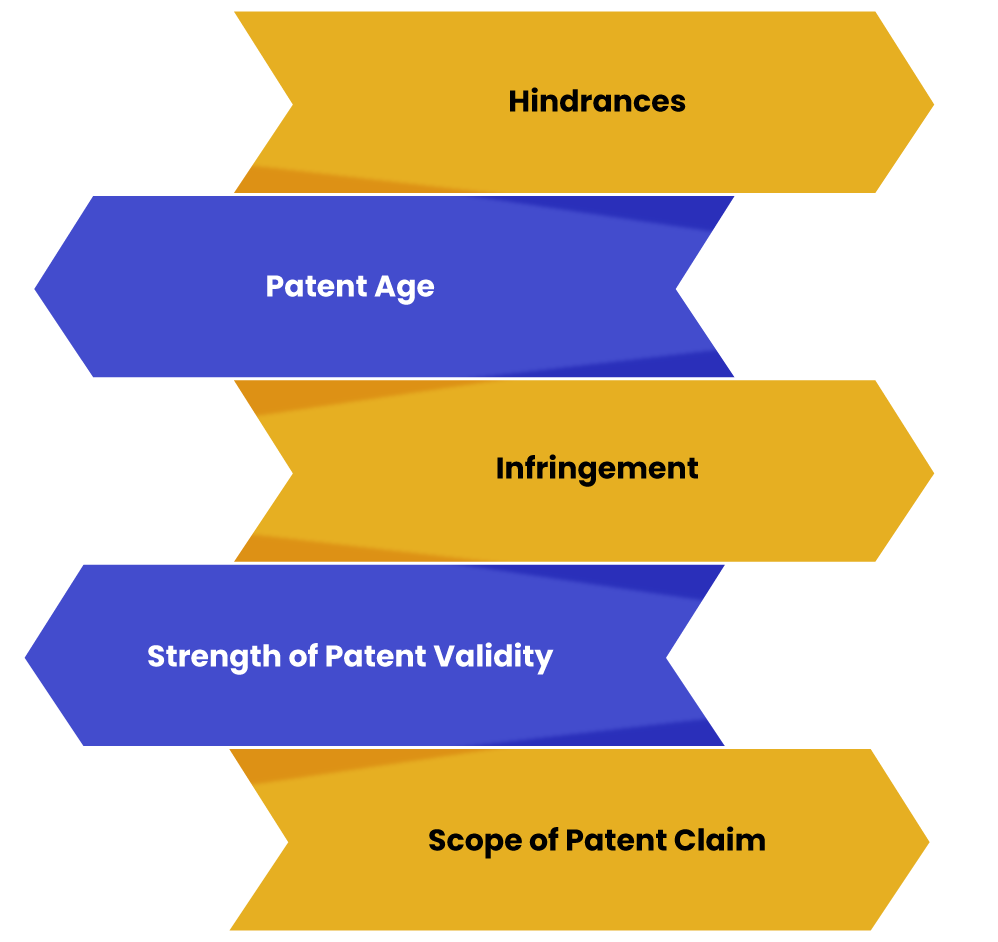All You Need to Know About Patent Valuation

Karan Singh | Updated: Sep 06, 2021 | Category: Patent
Since innovations are of vast importance in the accomplishment of a competitive edge, their protection may create robust corporate success. Hence, Patents and innovations are known to be vital aspects for companies of all industries & sizes. In a perspective of increasing capital requirements of companies and growing exploitation opportunities on global financial markets, Patents are also of substantial interest to investors & stakeholders. Therefore, the management of irrelevant assets is an essential factor of strategic management that is constantly rising insignificance. In this blog, we will discuss about Patent Valuation and the different parameters used by professionals.
Table of Contents
What is Patent Valuation?
Patent Valuation is an Intellectual Property[1] process that allows businesses to find out the monetary worth of their Patents or the complete Patent portfolio. Precisely valuing Patents bolsters your chances of monetisation and certainly impacts the Research and Development efforts of your organisation. Patent Valuation is vital for every type of company or entity, be it a vast scale or a medium or small scale enterprise. Since Patents are valuable assets, it makes more logical for organisations or companies to estimate their worth & recognise opportunities to monetise them accordingly. As the number of filing Patent applications increases, there is a good chance that the Patent market will remain competitive & Patent Portfolio Valuation would be central to several business transactions.
What are the Different Categories of Parameters for Patent Valuation?
For an organisation or a company to estimate the value of its Patents, it needs to examine the market value of its patented innovation comparatively. But, this is not the only aspect or parameter of determining the Patents value. Following are the two categories of Parameters for Patent Valuation:
- Quantitative Parameters for Patent Valuation: These categories are divided into different sub-parameters that should be considered during Patent Valuation, and you can check the factors that come under the quantitative aspect below:

- Geographical Location: In Patent Valuation, market size is an essential factor; the geographical coverage of the relevant Patent family should also be considered during the Valuation of Patent. The Patent value may change depending upon its geographical coverage that falls under the USPTO (United States Patent & Trademark Office), the EPO (European Patent Office), or any other jurisdiction. Thereafter, the size of the market can be deemed in terms of these geographies.
- Market Applicability: For patented creations or innovations that have proven to be beneficial in current products in the market, the value often rises. This means Patents that are victorious and presently appropriate in the particular market have a higher Patent Valuation.
- Size of Market: This factor plays an essential role while estimating Patents value based on quantitative parameters. This factor concerning the market size of the patented technology. As per the current report, the worldwide content delivery market size is likely to rise from 14.4 Billion US Dollars in 2020 to 27.9 Billion US Dollars in 2025. Hence, the Patent value relating to this technology can be considerably affected by its growth and market size.
- Technology Utilisation: Another vital parameter for valuation is to consider the present stage of the provided technology. For a new technology that is still in its growing phases, professionals may often arrive at a minimal Patent Valuation in comparison to others that have matured. But, it varies from market to market, and hence the valuation shall be vigilantly adjusted.
- Future Cash-Flows: The income-based approach that predicts future cash flows that a Patent can bring is also a beneficial parameter for the valuation. For example, as the usage of data is increasing due to the rapid usage of the internet, the value of such Patents is probably to be high in the future. This evaluation is only possible if we consider future cash-flow outlooks of the Patent.
- Historical Information: In this market, professionals consider the previous transactions that have taken place for the given patented technology. For instance, in the case of a software-related Patent, a professional will generally recognise per Patent value of transactions that have to happen for it in the past. Suppose a company gas USPTO issued Patents in their portfolio. In that case, this aspect is considered extremely vital because most companies in the US believe past transactions to be a correct measure for the Patent Valuation.
- Qualitative Parameters for Patent Valuation: Besides quantitative parameters, as we discussed above, there are five vital qualitative parameters that offer a new viewpoint on the Valuation of Patents. Professionals often depend on these factors when the quantitative methods prove uncertain in arriving at a Valuation. Following are the qualitative parameters:

- Hindrances: This is the most vital parameter because it takes into account the viewpoint of the buyer. For instance, suppose a corporate is looking to purchase a Patent portfolio, and it determines that some of the assets in the Patent portfolio are formerly licensed to opponents.
- Patent Age: A Patent has a lifespan of 10 to 12 years, and in general, most Patents have a lifetime of 20 years; hence, such a matured Patent often has a higher Patent premium due to its proven efficacy.
- Infringement: Some Patents have well coverage than others to provide protection against replication. The Patents that have broad infringement direct a premium and hence are considered to have a higher value as well.
- Strength of Patent Validity: From the viewpoint of the buyer, a Patent with questionable validity usually has lower financial value. A buyer is always looking for Patents that can withstand litigation & have a high strength of validity. The Patent valuation can be increased by conducting an invalidity search to assess the Patent strength in terms of validity.
- Scope of Patent Claim: The claim scope should be right, neither too extensive nor too short. An extensive claim scope might pose validity problems, and a short claim scope might create pertinence challenges. Thus, one can determine the Patents claim scope to regulate their value accordingly.
Conclusion
In the end, it is clear that for Patent Valuation, businesses can adopt various plans or strategies to make the process efficient. This is because there is no exacting industry method that is concurrently used by all professionals. But, an expert strategic partner can improve the whole process based on its years of expertise in handling such cases.
Read our article:Letter Patent Appeal – A Complete Analysis














